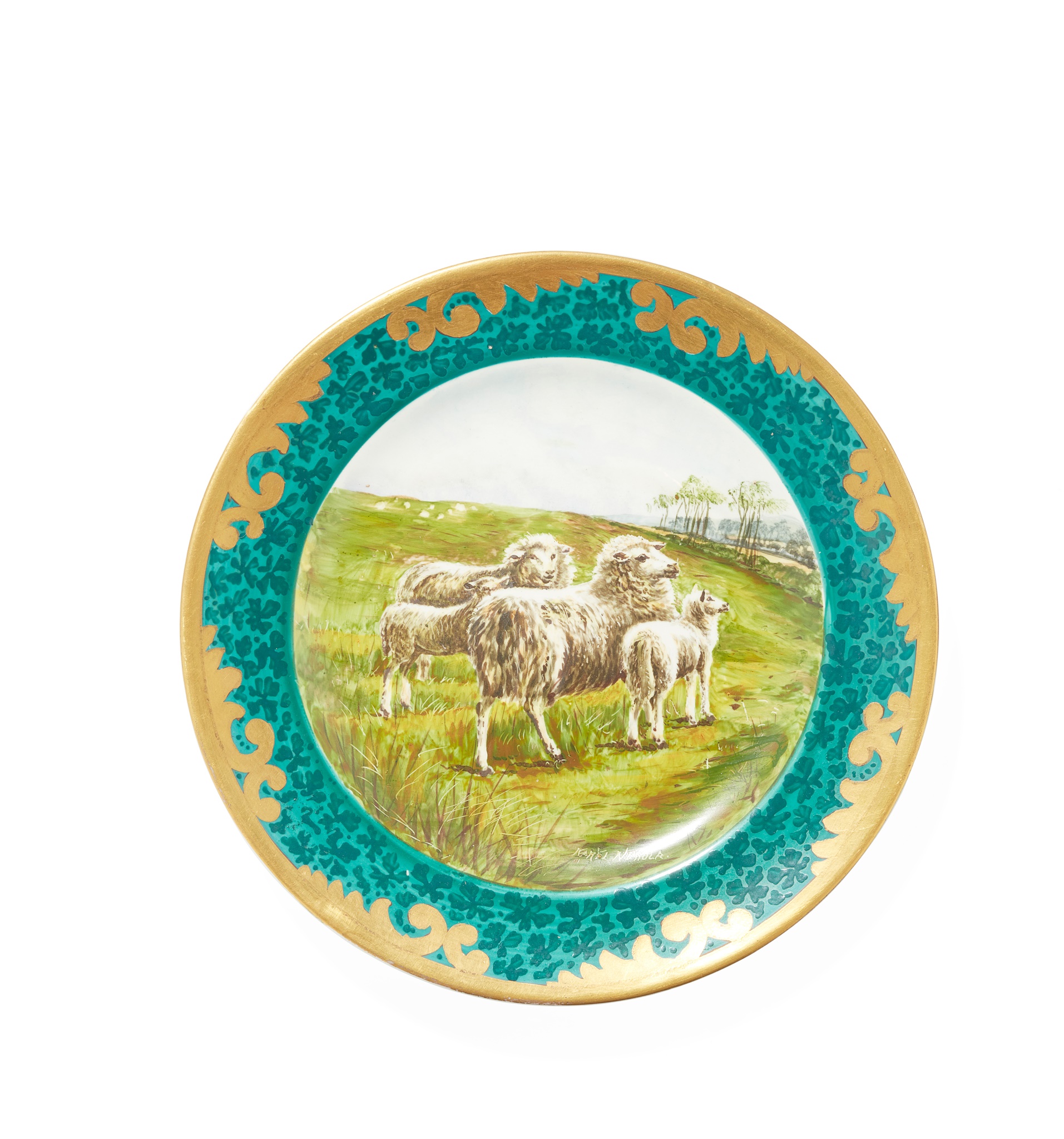A RARE WEMYSS WARE PLATE
CIRCA 1900
£1,375
Scottish Works of Art & Whisky
Auction: 18 August 2021 at 11:00 BST
Description
decorated with sheep by Karel Nekola, with gilded border, signed KAREL NEKOLA, bearing inscription verso CA' THE YOWS/ TO THE KNOX
Dimensions
23.5cm diameter
Footnote
Note: 'The Knox' in the inscription on this plate may allude to the Knox Pulpit formation, an outcrop of sandstone on the lower slopes of the Lomond Hills in west-central Fife, an area known for its sheep grazing.

